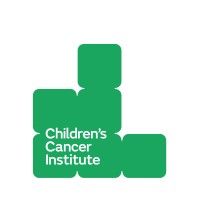预约演示
更新于:2025-05-07

Children's Cancer Institute Australia
更新于:2025-05-07
概览
标签
肿瘤
其他疾病
神经系统疾病
小分子化药
siRNA
化学药
疾病领域得分
一眼洞穿机构专注的疾病领域
暂无数据
技术平台
公司药物应用最多的技术
暂无数据
靶点
公司最常开发的靶点
暂无数据
| 排名前五的药物类型 | 数量 |
|---|---|
| 小分子化药 | 3 |
| siRNA | 1 |
| 化学药 | 1 |
| 排名前五的靶点 | 数量 |
|---|---|
| PSEN1 | 1 |
| N-Myc x c-Myc | 1 |
| HDACs x USP5 x c-Myc | 1 |
关联
6
项与 Children's Cancer Institute Australia 相关的药物作用机制 MYC抑制剂 [+1] |
原研机构- |
在研适应症 |
非在研适应症- |
最高研发阶段临床前 |
首次获批国家/地区- |
首次获批日期- |
作用机制 HDAC抑制剂 [+2] |
在研适应症 |
非在研适应症- |
最高研发阶段临床前 |
首次获批国家/地区- |
首次获批日期- |
靶点- |
作用机制- |
在研适应症 |
非在研适应症- |
最高研发阶段临床前 |
首次获批国家/地区- |
首次获批日期- |
1
项与 Children's Cancer Institute Australia 相关的临床试验NCT06208657
Optimal Precision TherapIes to CustoMISE Care in Childhood and Adolescent Cancer
A companion platform trial to test novel targeted agents based on the patient's tumor profile.
开始日期2024-07-10 |
申办/合作机构 |
100 项与 Children's Cancer Institute Australia 相关的临床结果
登录后查看更多信息
0 项与 Children's Cancer Institute Australia 相关的专利(医药)
登录后查看更多信息
201
项与 Children's Cancer Institute Australia 相关的文献(医药)2025-04-21·Cancer Research
Abstract 2608: The super enhancer-driven long noncoding RNA lncNB promotes neuroblastoma tumorigenesis by interacting with MSI2 protein and is targetable by small molecule compounds
作者: Mayoh, Chelsea ; Cheung, Belamy B. ; Seneviratne, Janith ; Khoo, Poh ; Li, Jinyan ; Mondal, Sujanna ; Trahair, Toby ; Marshall, Glenn M. ; Ziegler, David S. ; Bartonicek, Nenad ; Jin, Lei ; Dinger, Marcel E. ; Liu, Tao ; Maag, Jesper ; Liu, Pei Y. ; Ludlow, Louise E. ; Venkat, Pooja ; Chen, Jingwei ; Wong, Matthew ; Wu, Jing ; Zhang, Xu D. ; Street, Ian ; De Weck, Antoine ; Mestdagh, Pieter
2025-04-21·Cancer Research
Abstract 2613: The role of the RNA methyltransferase RNAMT1 as a tumorigenic driver and therapeutic target in neuroblastoma
作者: Ip, Kenny ; Cheung, Belamy ; Wong, Justin ; Liu, Tao ; Gadde, Satyanarayana ; Mondal, Sujanna ; Wu, Jing ; Chok, Kian Chung
2025-04-21·Cancer Research
Abstract 6863: Development of MYCN/MYC inhibitors
作者: Doughty, Larissa ; Ziegler, David ; Chung, Natalie ; Cheung, Belamy ; Wang, Qian ; Gadde, Satyanarayana ; Tsoli, Maria ; Chesler, Louis ; Ng, Sin Wi ; Nero, Tracey ; Marshall, Glenn ; Parker, Michael ; Kumar, Naresh
2
项与 Children's Cancer Institute Australia 相关的新闻(医药)2024-06-28
FRIDAY, June 28, 2024 -- Precision-guided treatment improves outcomes for children with high-risk cancer, according to a study published online June 6 in
Nature Medicine
.
Loretta M.S. Lau, M.B.B.S., Ph.D., from the Children's Cancer Institute at the University of New South Wales Sydney, and colleagues reported data from 384 patients with high-risk pediatric cancer with at least 18 months of follow-up on the ZERO Childhood Cancer Precision Medicine Program PRecISion Medicine for Children with Cancer trial to examine which patients will benefit most from PGT. Overall, 67 and 29 percent of children received PGT recommendations and received a recommended treatment, respectively.
The researchers found that the objective response rate was 36 percent with PGT, and two-year progression-free survival was improved with PGT versus standard of care or targeted agents not guided by other molecular findings (26 percent versus 12 and 5.2 percent, respectively). Based on tier 1 evidence, the greatest clinical benefit was seen for PGT targeting fusions or commenced before disease progression.
"This study demonstrates that children with high-risk cancers benefit from PGT identified by comprehensive molecular profiling," the authors write. "Treatment strategies should focus on the identification of drivers and early treatment of patients with highly targetable molecular drivers."
Several authors disclosed ties to the pharmaceutical industry.
Abstract/Full Text
Whatever your topic of interest,
subscribe to our newsletters
to get the best of Drugs.com in your inbox.
临床结果ASCO会议
2019-07-30
A breakthrough new drug is providing hope to tiny babies at risk of dying from an aggressive form of acute lymphoblastic leukaemia and could help all cancer patients.
A team from Children's Cancer Institute in Sydney has proven a ferocious form of the...
100 项与 Children's Cancer Institute Australia 相关的药物交易
登录后查看更多信息
100 项与 Children's Cancer Institute Australia 相关的转化医学
登录后查看更多信息
组织架构
使用我们的机构树数据加速您的研究。
登录
或

管线布局
2025年07月22日管线快照
管线布局中药物为当前组织机构及其子机构作为药物机构进行统计,早期临床1期并入临床1期,临床1/2期并入临床2期,临床2/3期并入临床3期
临床前
5
1
其他
登录后查看更多信息
当前项目
| 药物(靶点) | 适应症 | 全球最高研发状态 |
|---|---|---|
Tribetarna | 非小细胞肺癌 更多 | 临床前 |
TRXE-009 | 弥漫内生性脑桥神经胶质瘤 更多 | 临床前 |
SE486-11+SAHA (Children's Cancer Institute) ( HDACs x USP5 x c-Myc ) | 神经母细胞瘤 更多 | 临床前 |
UNSW-SC-22 ( N-Myc x c-Myc ) | 神经母细胞瘤 更多 | 临床前 |
MRK-560 ( PSEN1 ) | 前体T淋巴细胞白血病淋巴瘤 更多 | 临床前 |
登录后查看更多信息
药物交易
使用我们的药物交易数据加速您的研究。
登录
或

转化医学
使用我们的转化医学数据加速您的研究。
登录
或

营收
使用 Synapse 探索超过 36 万个组织的财务状况。
登录
或

科研基金(NIH)
访问超过 200 万项资助和基金信息,以提升您的研究之旅。
登录
或

投资
深入了解从初创企业到成熟企业的最新公司投资动态。
登录
或

融资
发掘融资趋势以验证和推进您的投资机会。
登录
或

Eureka LS:
全新生物医药AI Agent 覆盖科研全链路,让突破性发现快人一步
立即开始免费试用!
智慧芽新药情报库是智慧芽专为生命科学人士构建的基于AI的创新药情报平台,助您全方位提升您的研发与决策效率。
立即开始数据试用!
智慧芽新药库数据也通过智慧芽数据服务平台,以API或者数据包形式对外开放,助您更加充分利用智慧芽新药情报信息。
生物序列数据库
生物药研发创新
免费使用
化学结构数据库
小分子化药研发创新
免费使用
